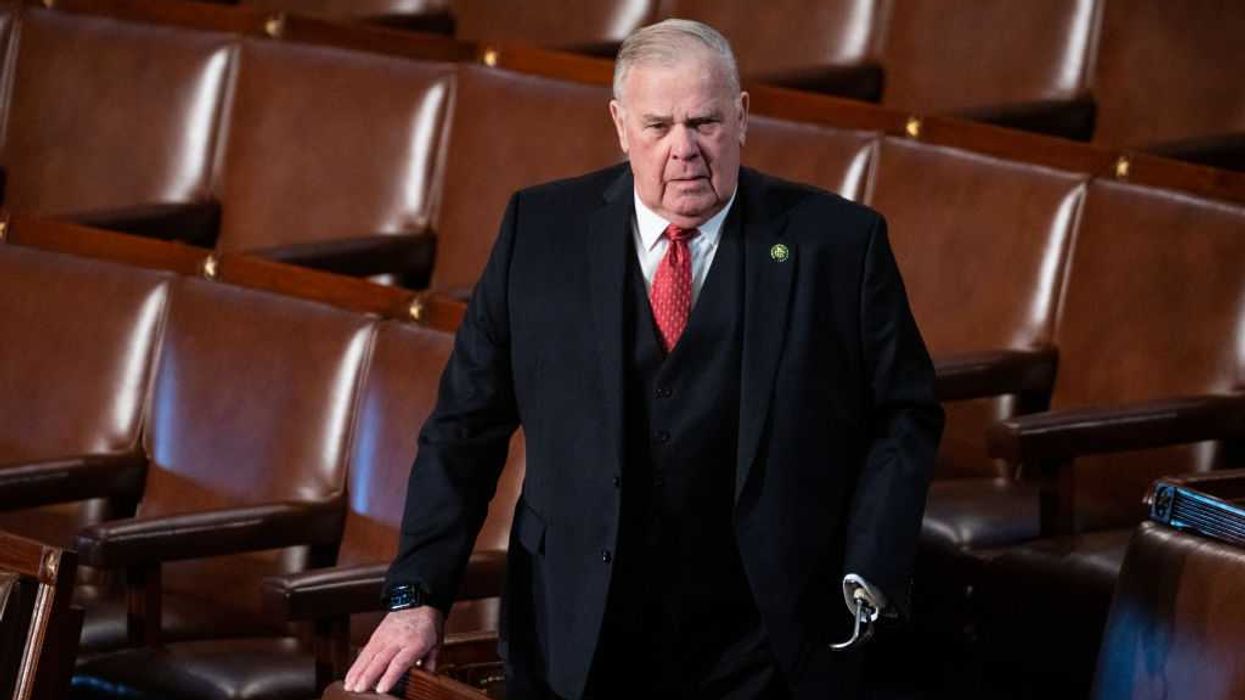
© 2026 Blaze Media LLC. All rights reserved.
As horror stories about Chernobyl and the nuclear radiation poisoning that followed began to spread, the citizens of the Soviet Union began to lose faith in the state’s ability to inform and protect them
The Soviet Union was destroyed by a nuclear explosion, an idea that is supported by non-other than Mikhail Gorbachev himself, the architect of its dismantling.
On the 26th of April 1986, poorly trained technicians decided to undertake a systems test of reactor 4 at the Chernobyl nuclear power plant. A surplus of energy surged into the reactor which exploded, instantly killing workers in the immediate vicinity and exposing others at the plant to deadly levels of radiation.
As residents in the nearby town of Prypiat woke up that morning they suffered nausea and respiratory problems. Workers were sent in response to the disaster to encase the reactor in concrete, and tens of thousands of citizens from around the Soviet Union moved to the area to try and help clear the accident up. The government offered no warning or advice of any kind about the danger from the radiation, leading to widespread illness as all involved were struck with severe symptoms of radiation poisoning.
The Soviet Union tried to cover the whole thing up, making only a vague announcement about the explosion after two days had passed; the world only became aware of the true horror of the accident once a radioactive cloud that had drifted into Sweden was sourced back to Chernobyl.
Just six years later the Soviet Union ceased to exist, as dissent amongst citizens, once completely satisfied with, and trusting of, their government, grew over issues such as public safety and political transparency.
Gorbachev states that Chernobyl was “perhaps the real cause of the collapse of the Soviet Union.”
Before the Chernobyl accident occurred Gorbachev had already introduced his glasnost policy which was aimed at increasing the transparency between the state and its citizens, yet what was expected to be a step by step incremental and slow process exploded after the accident.
Michael David-Fox, a professor of Russian and Soviet history at Georgetown University, also admitted that the disaster at Chernobyl may have hastened the implementation of the glasnost policy which eventually led to the dismantling of the Soviet Union.
As horror stories about Chernobyl and the nuclear radiation poisoning that followed began to spread, the citizens of the Soviet Union began to lose faith in the state’s ability to inform and protect them; the government quickly began to lose control over its public. Whereas before the people believed in the Soviet system, and trusted that it had led them to be the leading power in the world. After Chernobyl they realised that they were woefully inept compared to many western countries, and that the system was flawed and potentially dangerous.
On Christmas day 1991 one of the largest empires in history ceased to exist, and Chernobyl represents its final resting place.
Related articles From OilPrice.com:
- Kazakh Uranium: Eastern Giant Attracts Western Attention-Canada Considering Nuclear Reactors in Alberta Tar Sands Fields
This report is part of Oilprice.com’s premium publication Oil & Energy Insider. Oil & Energy Insider gives subscribers an information advantage when investing, trading or doing business in the energy sectors. To find out more on how you can get a legal inside advantage in the energy markets please take a moment to visit: https://oilprice.com/premium
Want to leave a tip?
We answer to you. Help keep our content free of advertisers and big tech censorship by leaving a tip today.
Want to join the conversation?
Already a subscriber?
more stories
Sign up for the Blaze newsletter
By signing up, you agree to our Privacy Policy and Terms of Use, and agree to receive content that may sometimes include advertisements. You may opt out at any time.
Related Content
© 2026 Blaze Media LLC. All rights reserved.
Get the stories that matter most delivered directly to your inbox.
By signing up, you agree to our Privacy Policy and Terms of Use, and agree to receive content that may sometimes include advertisements. You may opt out at any time.






